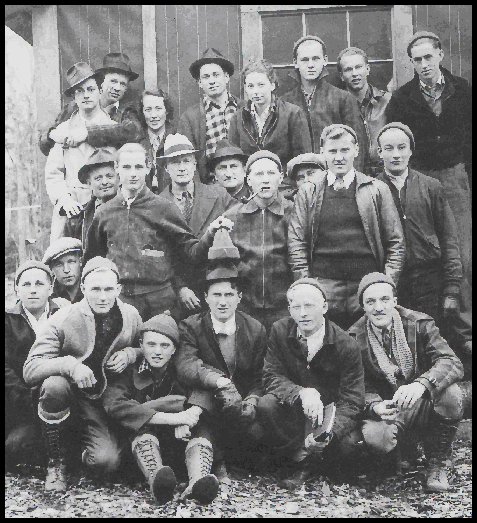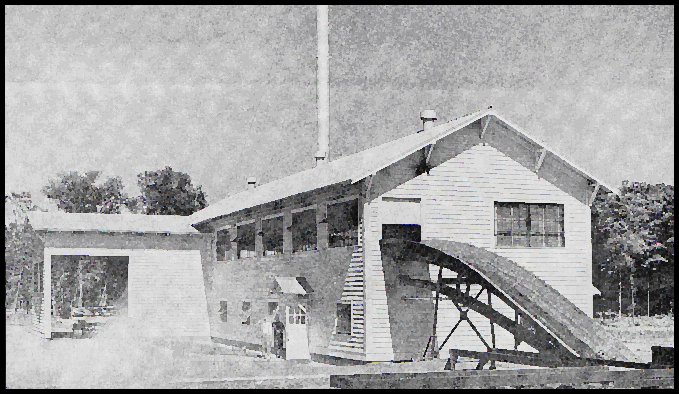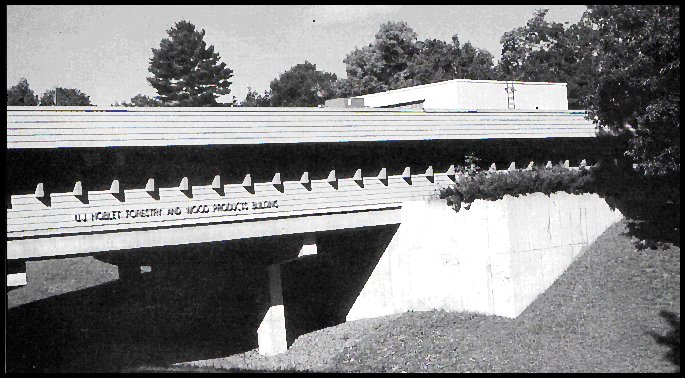
|
|
||||
Forestry Schools in
Upper Michigan; Then and Now . . .
By Louis J. Verme
| Michigan
Technological University
Forestry at Michigan Tech
had an interesting, if belated, genesis. Its progenitor was Ubald "Bert"
Noblet, a gifted and colorful individual. After graduating from Gladstone
High School, Noblet served as an aerial gunners mate in WWI. Afterwards
he enrolled at Michigan State (MAC), graduating with a degree in forestry
in 1922 (he later earned a Masters from the University of Minnesota).
Noblet went to Houghton to coach hockey at then Michigan College of Mining
and Technology. He had attended State on an athletics scholarship, starring
in three sports, and played in the first hockey game held there, in 1921,
against Notre Dame, on Red Cedar River Ice! |
|

Noblet married Gladys Nebel of Munising, and bought an old logging camp on Dana Lake, some miles south of town in 1930. He opened it up as a boys camp (for about 12 kids each summer) and also invited numerous friends and even military cronies for visits, especially during the deer hunting season. (A report stating that Noblet used this property to train his forestry students was not confirmed, although some of them no doubt occasionally did go there.)
An abandoned CCC facility, Camp Pori, near Mass City in the western U.P., served to train forest technicians and Michigan Technological University forestry undergraduates from 1946 to 1950. Program director "Hammer" Steinhilb (center, smoking pipe) stands in front of his mentor Bert Noblet (in dark fedora), who began the MTU forestry school in 1936. (Michigan Tech Forestry Department) |
|
|
After the war, Noblet traded "fortys" with the Forest Service in order to acquire the abandoned CCC property, Camp Pori, near Mass City in the U.P. The place had served as a prisoner-of-war internment facility housing German troops and was still in reasonably good condition in 1946. The camp was used by MTU to instruct aspiring forestry technicians during a 33-week course, in such basic subjects as land surveying, timber cruising, lumber grading, etc. (Periodically they also battled forest fires or planted trees for the Forest Service.) This school was directed by Helmuth "Hammer" Steinhilb, a graduate of the first Michigan Tech forestry class, who joined the faculty in 1945. He was charged with developing a ranger program much like the one taught at the Wyman School. Graduates from Steinhilb's program were highly skilled in their craft, so had no trouble getting good jobs in their chosen field after graduating. Camp Pori also was used as a summer school for regular forestry students through 1950. Thereafter the mandatory summer session was shifted to the Ford Forestry Center at Alberta, a wide spot in the road east of L'Anse. This sawmill and homes for workers had been built in 1935 by the Ford Motor Car Company (as 1 of 5 in the U.P.) to supply wooden frames and panels for station wagons, plus spokes, steering wheels, etc., for various car models manufactured during that early era. (Did you know, for instance, that 250 board feet of high-quality hardwood lumber was used to make a Ford Model T, the infamous Tin Lizzy?) This steam-driven plant had a daily output of between 18,000 b.f. of hardwood lumber to 23,000 b.f. of hemlock - which, for the uninitiated, is a lot of wood. With a little "inside
help" from a prominent alumnus, Noblet talked the Ford people into
deeding this no longer needed property to MTU. The gift included three
sections of prime selectively-cut northern hardwood timberland nearby.
These stands have been used ever since for research on proper silvicultural
management of this important forest type. |
|
 |
When northern hardwood lumber was no longer needed in manufacturing automobiles, the Ford Motor Car Company deeded its (Alberta) sawmill and accompanying buildings to Michigan Tech for training forestry students. A log has just splashed into the pond in this late 1930's photo of the sawmill. (Henry Ford Museum) |
|
I once was interviewed by Noblet for a newly authorized position teaching wildlife science to his students. I'd like to think I didn't get this plum job because my salary demands were outrageously high for academe! From its anemic beginning, by the 1970s MTU's forestry enrollment reached 700. Today the school has over 190 students, including an impressive total of doctoral candidates. The faculty, of course, had grown commensurately, and is deeply involved in research. It seems noteworthy that, following the trend in vogue at other institutions of higher learning, more than one-quarter of Michigan Tech's forestry enrollment presently consists of women. Alas, when I was a student at MSU there were no scholarly co-eds majoring in forestry (nor in wildlife management, for that matter) to add some sparkle to our often drab/dull classes.
|
|
 |
This modern classroom at MTU was renamed in honor of the person who initiated and led the forestry program there for many years. |
![]() TOP
Press arrow to return to
the top of this page.
TOP
Press arrow to return to
the top of this page.

This website is maintained
by Bill Cook, Michigan State University Extension
Forester in the Upper Peninsula. Comments, questions,
and suggestions are gratefully accepted.
Last update of this page
was
19 November, 2007
This site is hosted by School of Forest Resources and Environmental Science at Michigan Technological University.